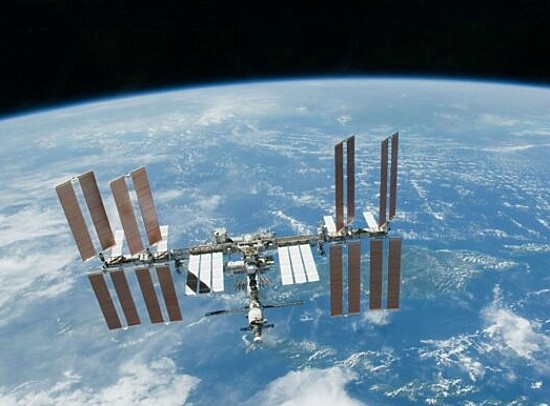In January 2031 the International Space Station (ISS) will return to Earth in a controlled descent after more than thirty years contributing an incredible amount of space-based scientific discovery. Between that date and now NASA anticipates a significant amount of new activity on the ISS, as well as the development of commercial alternative stations in Earth orbit.
Four companies are currently contracted by NASA to build a replacement for the ISS. The first, Axiom Space, intends to launch a series of modules to be attached to the current space station temporarily. Eventually, these modules will separate from the ISS to go it alone as a privately-operating habitat and platform. The first Axiom module will be joining the ISS as early as 2024. The other three companies, Blue Origin, Nanoracks and Northrop Grumman have been given $415 million in total by NASA to develop their Earth-orbiting habitats and space laboratories.
In its transition plan, NASA describes the current status of the ISS as entering its most productive decade with crew and cargo transportation increasingly the responsibility of commercial companies. In addition, the ISS is doing more with companies in the way of research and development. Onboard today are 20 commercial facilities including a 3D printer, bioprinter, airlock, external materials and Earth observation platform. A reserved docking port is in place for when Axiom begins delivering its modules to attach to the station.
The decision to end the life of the ISS has involved the 15 partnering countries and agencies that have been responsible for its build and maintenance. Since it first took on human crews in 2000, it has been the best example of international cooperation among nations despite the geopolitics of the participating countries. Particularly the two major participants, the United States and Russia, who often don’t see eye-to-eye here on Earth, have enjoyed a very successful partnership. Roscosmos, the Russian space agency, is currently completing feasibility studies to ensure that they are on board with the de-orbiting plan just announced in the last week.
So where will NASA astronauts go when the ISS is no more? The Agency plans to purchase births on its successors while the major focus transitions to the Artemis lunar landings and plans to send human crews to Mars and other destinations in the Solar System.
NASA has anticipated that it will take the next three to four years before Blue Origin, Nanoracks, and Northrop Grumman to complete the design of their replacements for the ISS. The Agency will then launch an open competition that may end up giving one or more of these companies, as well as Axiom, additional government money to turn the designs into reality.
The acronym that will replace ISS is CLD which stands for Commercial LEO (Low-Earth-orbit) Destinations. The experience gained from the building of the ISS should serve these companies well as they design their replacement.
When the ISS comes down to Earth, how will this be accomplished without risk to those of us here looking up? The idea is to begin retrograde orbital maneuvers lowering its operational altitude. After a series of these, the station will experience increasing orbital drag from the upper atmosphere. Combining the maneuvers and the effect of the drag will allow for the aligning of the station to a designated target area in an uninhabited area of the South Pacific Ocean. NASA has given the destination a name, Point Nemo. The de-orbit maneuver will require the use of visiting commercial and Russian cargo capsules. The Northrop-Grumman Cygnus and Roscosmos Progress spacecraft are currently the most likely candidates to assist in ending the life of the ISS.
Between now and then the ISS is going to be a busy place. NASA’s agenda includes:
- Testing of critical technologies for future Deep Space exploration including environmental control and life support systems with ongoing research studying the limits of human endurance in space with the target being the feasibility of a mission to and return from Mars.
- Earth sciences research on the environment and climate change using onboard and satellite platforms to continue gathering data on CO2, methane and other greenhouse gas emissions, land, ocean, ecosystem and upper atmosphere and near-Earth space dynamics.
- Taking advantage of the unique microgravity environment to make advancements in medical, pharmaceutical, and material sciences.
- Providing student outreach programs that give them the means and opportunity to devise and carry out experiments using the microgravity environment.
- Finding new scientific discoveries by using the suite of onboard instruments to advance knowledge about solar and cosmic particles, dark matter, antimatter, and quantum phenomena.
- Supporting the development of the CLDs by being a useful testbed for the production and assembly of future components that will make up these orbiting platforms.
- Continuing to foster international collaboration and participation among the 15 national partners to ensure a long-term human presence in space.
- Inspiring all of humanity by engaging the public, educators and youth through immersive virtual and actual physical visits to the ISS to foster the beginnings of space tourism and lead to permanent future habitations in low-Earth-orbit and beyond.
Could the ISS last beyond the planned end date? Undoubtedly the cost of maintaining it would mount as the various components age and require retrofit and replacement. Removing it and switching to one or more CLDs could save the Agency as much as $1.3 billion in 2031, escalating to annual savings of $1.8 billion by 2033. This is money that could go elsewhere to fund NASA’s Artemis Moon Program and a future mission to Mars.
















